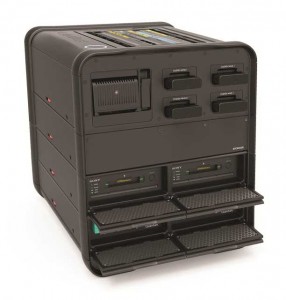
Released earlier this year, the Vault provides a standardized, standalone workflow for digital productions, including those using multiple camera systems. It can be deployed on set or near set and offers a simple and efficient way to process dailies for review, editorial, postproduction and archive.
Cuban Fury, directed by James Griffiths and lensed by cinematographer Dick Pope, was shot with two ARRI Alexa cameras with ARRIRAW camera data captured by Codex Onboard M recorders. When the recorders’ data-packs were full, they were ported to an on-set Vault and it was used to offload the data and make backups. The ARRIRAW data was then transferred to a second Vault, located near set, for dailies processing. This second Vault produced media for review, editorial, visual effects and archival purposes. All of the Codex gear was supplied by Movietech.
“The Vault was perfect for this production, because it allowed us to remain small scale,” observed Peter Marsden, the production’s digital imaging technician. “Normally on a digital feature, you have lots of equipment that adds lots of weight to the camera truck, but here all that was reduced to a single, compact machine.”
Marsden noted that the speed with which the system was able to offload camera data allowed him to employ a minimum number of recorder datapacks – six between two cameras. Production was never slowed by the need to process camera data, he said, and, in fact, the Vault could have easily accommodated a more complicated workflow. “The system had plenty of capacity,” said Marsden. “I could have added a third camera and still kept everything 100 percent backed up.”
This workflow eliminated the need for an external laboratory infrastructure. “We didn’t have the risk of sending original camera media off set for processing,” he explained. “It was all done within the confines of the location. It cloned the media very quickly and provided the assurance that it was correct and secure.”
The second Vault was set up in the film’s production office. “We used it to generate files for editorial,” Marsden noted. “It allowed us to create Avid files with a customized burn-in, including timecode and slate data, as well as a standard ARRI 3D LUT. It also allowed us to create 10-bit DPX frames as and when required for use by the visual effects company.”
The Vault also made Marsden’s job easier simply by occupying a smaller footprint. “Someone on the set looked at The Vault and said to me, ‘Is that it?’” he recalled. “The system occupied one end of the top tray of my magliner. That’s how compact it is. I’m carrying less equipment than I ever have before.”





